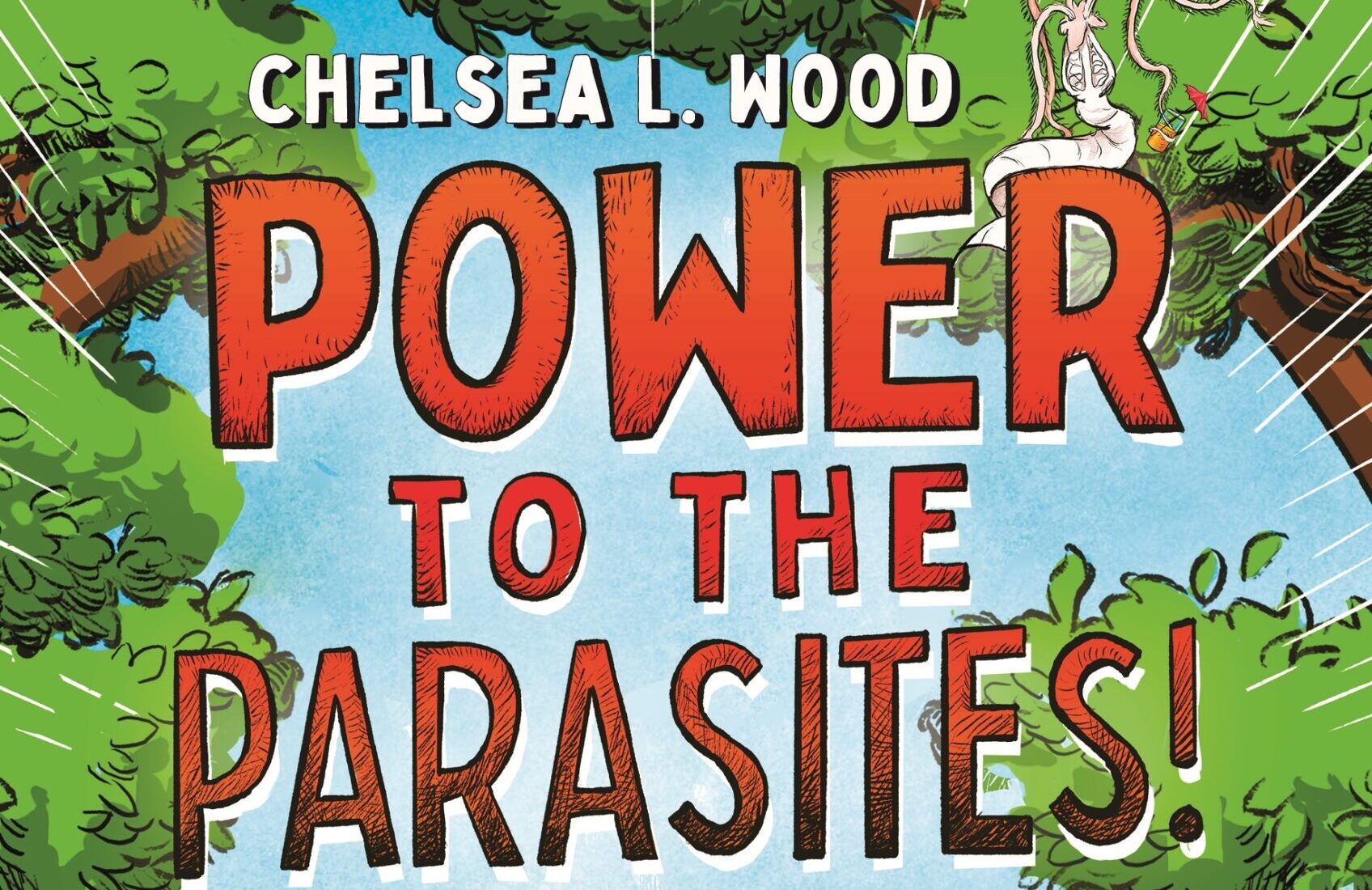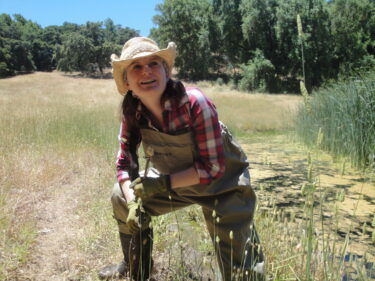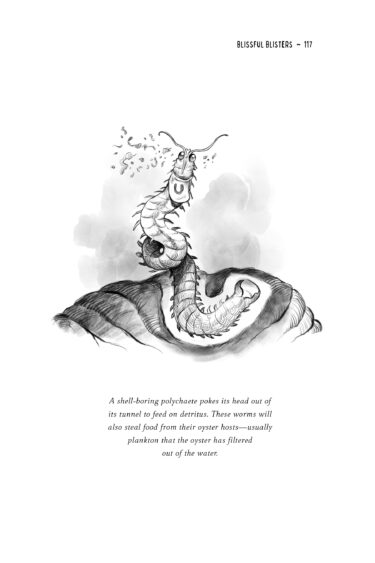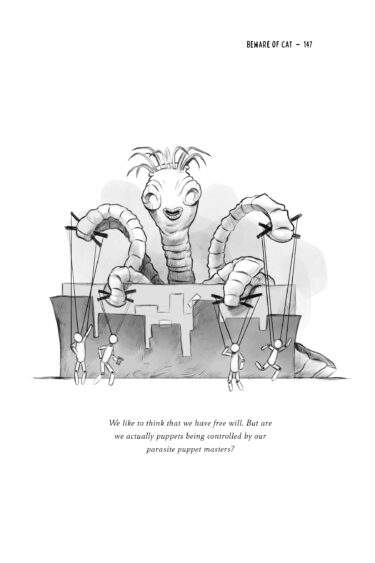October 30, 2024
UW researcher reveals ‘everything you (n)ever wanted to know’ about parasites in new children’s book

“Power to the Parasites! Everything You (N)ever Wanted to Know About the Creepy Crawlies Hidden in Your Home, Your Food, Your Pets – and Maybe Even in You!” introduces kids to the world of parasitism.Chelsea Wood/Godwin Books
Chelsea Wood has a favorite parasite.
“I’m supposed to love them all equally, like my children,” she said. “But I do have a favorite.”
That parasite is called Amphilina foliacea, and Wood wrote about it in her upcoming children’s book, “Power to the Parasites! Everything You (N)ever Wanted to Know About the Creepy Crawlies Hidden in Your Home, Your Food, Your Pets – and Maybe Even in You!” The book introduces kids to the world of parasitism – including, of course, Wood’s personal favorite.
Amphilina foliacea is an oval-shaped tapeworm that used to be a parasite of prehistoric marine reptiles. After the host reptiles went extinct at the K-T boundary, in one of the greatest mass extinctions in Earth’s history, Amphilina foliacea evolved to reach maturity in the body cavity of sturgeons.

“Power to the Parasites!” is the first children’s book written by Chelsea Wood, a a UW associate professor of aquatic and fishery sciences.Chelsea Wood
“It’s this living fossil of a catastrophe that somehow, it survived,” said Wood, a University of Washington associate professor of aquatic and fishery sciences. “At the K-T boundary, 75% of all species on the planet went extinct. And somehow Amphilina found a way to persist – this weird, unusual, creative, beautiful way to make it through.”
Amphilina foliacea is just one of the parasites covered in Wood’s book, which will be released Nov. 12 by Godwin Books.
Writing a children’s book never crossed Wood’s mind until Laura Godwin, publisher of Godwin Books, heard Wood give an interview on NPR and reached out. The topic of that interview? A parasite that induces suicidal impulses in crickets.
“I was like, ‘You really want me to tell that story to children?’” Wood said. “And Laura said, ‘Yes, absolutely. They would love it.’ I wasn’t convinced at first, but Godwin Books is a trusted source for excellent children’s literature. So, I gave it a shot, and it turned out to be so much fun.”
Wood keeps remarks about various parasites prepared for reporters and students, and those well-rehearsed set pieces became chapters in the book. Each chapter covers one parasite or group of parasites: the beginning covers parasites you might find in nature, and the later part of the book discusses parasites of humans, households, pets and food.

A page from “Power to the Parasites!”, written by Chelsea Wood and illustrated by Dave Mottram.Chelsea Wood/Godwin Books
One of the chapters introduces Toxoplasma gondii, a single-cell parasite passed from cats to rats and back again. It’s also the reason pregnant people shouldn’t clean litter boxes. The parasite’s goal is to return to the cats’ intestine to reproduce. Toxoplasma gondii has learned to “puppeteer rats,” Wood said. While uninfected rats are afraid of cats, infected rats love the smell of cat urine and will run toward it.
People can also host Toxoplasma gondii, replacing the rat in the life cycle. People who are infected have much slower reflexes, Wood said. They’re about three times as likely to get into a car accident. They also undergo personality changes that differ depending on biological sex. While men tend to become more suspicious and less inclined to follow others, women become warmer-hearted and more gregarious.
“We humans envision ourselves as the masters of the universe,” Wood said. “We have the most sophisticated brain on the planet. That might be true, but we’re still susceptible to being manipulated by these tiny, simple, single-celled organisms. I just find that spectacular.”
Still, Wood didn’t completely believe kids would be interested in parasites until she visited a camp with her team while conducting fieldwork in New Orleans this summer. She thought the kids would be bored, but they enthusiastically engaged with the material. One 11-year-old impressed Wood so much with his parasite knowledge that she pulled him aside after the presentation.
“It was a delight to see how pumped the kids were to learn these facts about parasites and how quickly they absorbed it,” Wood said. “It wasn’t hard to convince them that parasites are amazing, and it made me really excited about the book’s potential to provoke kids’ curiosity.”
While in New Orleans, Wood successfully tested a new learning module that incorporates the book and other activities to help reinforce what young readers are learning about parasites. She plans to bring that module to classrooms in Seattle and Albuquerque, where she’ll work in the field next summer. Wood hopes the learning module can serve as an accompaniment to the book or be used independently to help second- to fifth-grade teachers bring parasite biodiversity material into their classrooms.

A page from “Power to the Parasites!”, written by Chelsea Wood and illustrated by Dave Mottram.Chelsea Wood/Godwin Books
Wood has plenty of experience teaching undergraduate students the basics about parasites, and the stories she wrote in her book are the same ones she uses in her undergraduate courses. Still, it took some work to pitch the information for an elementary age group.
One challenge arose during a chapter about red grouse and their intestinal parasites. Wood wanted to include graph that walks students through the basics of data visualization, a skill that’s particularly important for scientists. Through discussion with Godwin, Wood settled on an interactive chapter where readers are instructed to use their finger to interpret a graph.
Between the book and learning module, Wood’s hope is that someday, undergraduates won’t reach college with zero knowledge of parasites. While students enter ichthyology or ornithology classes with a foundation in fish or bird biology, Wood’s students are often blank slates. It’s fun, she said, to teach students about “things they have never in their wildest dreams imagined.” But she also wants to see biology education at all levels reflect actual biodiversity.
“If we’re estimating really conservatively, parasites make up 40% of all animal species,” Wood said. “How are you getting through high school not hearing about parasites? That’s just nuts to me. Part of the goal of the book is to help address that, and we want the learning module we’re creating to make it easy for elementary teachers to bring this content into their classrooms.”
For more information, contact Wood at [email protected].
Tag(s): Chelsea Wood • College of the Environment • School of Aquatic and Fishery Sciences

